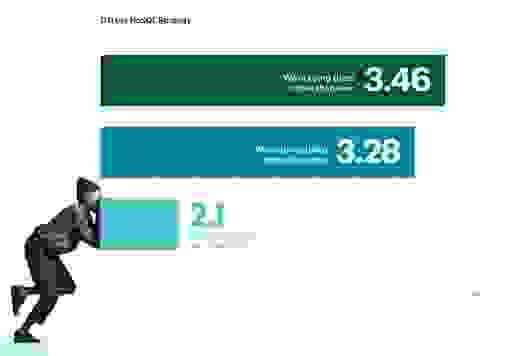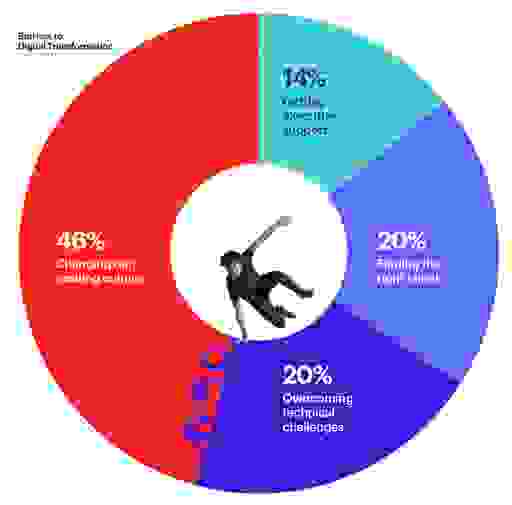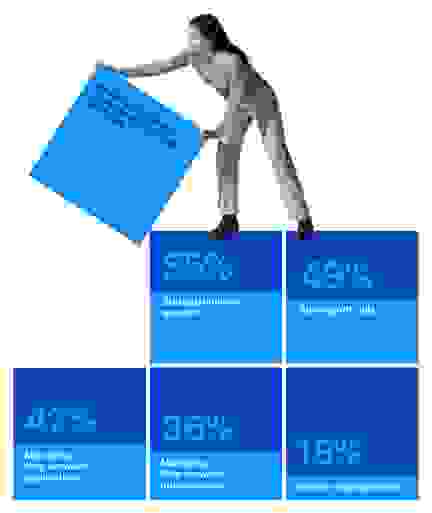
Learn more

Much ink has been spilled on digital transformation in the past decade. At Redis, we see a direct connection between a set of technology layers that enable transformations (cloud, microservices, containers, and NoSQL databases) and how quickly and successfully companies are able to push through their transformation journeys.
But how do we quantify that connection into actionable insights? That’s where the Digital Transformation Index (DTI) comes in. First, we combine the adoption of those four technologies to create a single composite index for how far a company is on their journey. Then we compare the index across companies to see the impact of technology adoption on maturity. And since this is the second DTI report, we can also compare results to the first report for additional insights.
The results give us an accurate view into the digital transformation journey and what struggles companies run into along the way—and how they overcome them.
Download the report, or read on for how we got the numbers and key findings!
Organizations moving forward with NoSQL had a DTI nearly 1.4 higher than those who are moving away from NoSQL. That’s the biggest gap for any question in the survey. It shows how the greater speed, flexibility, and scalability of NoSQL databases are essential for an upgraded data stack.

By a wide margin, cultural changes were named the most significant issue when mobilizing an organization to transform. This probably isn’t a surprise to anyone who’s implemented technical initiatives across an organization, but we were struck by the magnitude of the problem. Cultural changes were a bigger challenge than technical and talent hurdles combined. It shows why it’s important to remember that it’s a “digital transformation” and not “technology upgrades.” You’re changing how your company operates, which means sometimes it’s just as important to focus on change management as onboarding new technology.

The good news here is that executive support for digital transformation is the least common problem. Finding the right talent and overcoming technical challenges, such as breaking down monoliths, were far less difficult than making cultural changes.
Caching has moved from being an optimization for improving performance to a critical application component with a wider variety of use cases. No matter what your architecture, your application or microservice won’t scale without a cache. In a recent interview, thought leader Lee Atchison put it bluntly:
Caching is absolutely critical to scaling the needs of today’s modern applications….Caching used to be an add-on to improve performance, but now caching’s becoming a central tenet in all aspects of modern computation and an essential part in the operation of all types of applications and systems.
Caching at Scale With Redis
While we’re on the subject of caching, we can’t help but recommend Caching at Scale With Redis. Packed with examples, advice, and architectural diagrams, it’s a great resource for anyone interested in building modern applications that scale.

Overall, the survey shows how our customers are moving forward with their digital transformations. The pace of innovation is picking up, making cultural changes is the most difficult part of a transformation, and caching is playing an evermore important role in modern architectures. And, of course, none of this matters without a modern, performant, scalable data layer.
To understand where our customers are on their journey, we asked thousands of RedisConf 2021 attendees about the way they’re using these modern technologies. Or starting to use them. Or maybe not using them at all.
We wanted to find out about the technologies our customers use, and changes in their broader IT environments. So we asked about cultural changes, application development trends, and how people in different roles perceived their organization’s progress. What emerged told us about important changes in how database applications are built, how caching is evolving, and how often high performers dream about coding. (Like we said, we tried to be comprehensive.).
As we work with customers around the world, one of our key principles is: Your organization only moves as fast as your data. This report bears that out, with the types of databases in use and how those databases are used being key indicators of an organization’s digital success.
Download the full report today to see all the insights and takeaways from the survey. Want to join the conversation and influence future research? Tell us your transformation story (and challenges!) at DTI@redis.com.